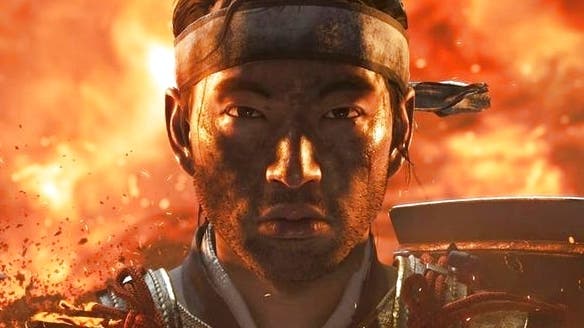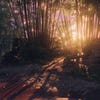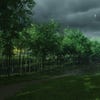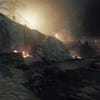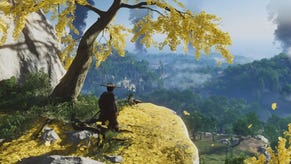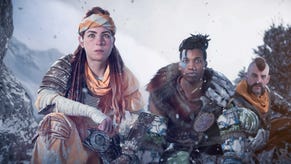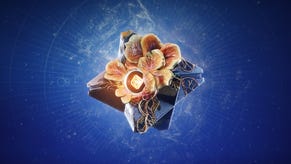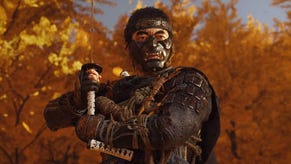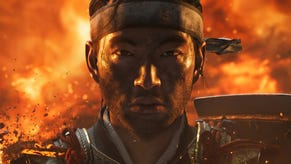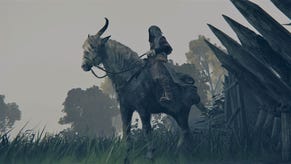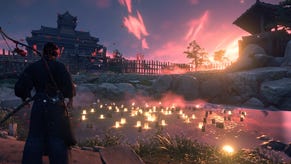Ghost of Tsushima tech review: Sony first-party magic delivers a beautiful open world
Sucker Punch's best game yet, but it's far from perfect.
Six years on from InFamous Second Son and its standalone add-on, First Light, Sucker Punch returns with Ghost of Tsushima - an open world adventure game centered around the journey to become a Samurai. Perhaps the last in an accomplished line of triple-A Sony first-party releases, this title represents a significant visual departure from any project Sucker Punch has previously worked on. The emphasis on InFamous' urban locations gives way to a much larger, more organic, natural environment, necessitating a radical shift in the underlying technology. Ghost of Tsushima is the best-looking game Sucker Punch has crafted and stands tall in the genre - but it's not perfect.
The world of Tsushima is vast and unique - the move to ancient Japan has a profound impact on the overall look and atmosphere compared to the average open world experience but before we go deeper, let's start with the basics. Ghost of Tsushima offers two visual modes when played on PS4 Pro - a quality mode and a mode that favours a 'better frame-rate'. Put simply, you're getting an impressive 3200x1800 image likely using checkerboard reconstruction for 4K screens, while the frame-rate mode locks everything (including the HUD and text elements) to native 1080p. The latter mode is essentially a match for users of the base PlayStation 4.
Both of the Pro's modes target 30 frames per second, with the performance option essentially acting as a guarantee for a locked 30fps - and if you are a Pro owner with a 4K screen, I'd recommend the quality mode as its performance level is pretty even overall. All versions support HDR and this mode comes highly recommended but it's not quite perfect as the HDR is extremely intense - high luminance areas are eye-searingly bright when contrasted against deep shadows. It's very effective for this title's aesthetic and lends the game a dreamy atmosphere that isn't as effective when played in SDR - but I do recommend visiting the config screen and adjusting the game to your tastes. With display modes selected and HDR tweaked, it's time to jump into the game itself, where Ghost of Tsushima certainly makes a very strong first impression.
Right away, you are offered multiple display and sound options including the ability to play the game in Japanese - and even in black and white thanks to the Kurosawa mode, as the developers call it. It's a neat touch. We tend to focus primarily on visuals at Digital Foundry, but in this case, I feel that audio deserves a special mention. The sound mix in this game is remarkably powerful to the point where it sounds more like a film as opposed to a typical game. The use of the LFE channel for deep but smooth bass combined with heavy reliance on surround sound channels works brilliantly. It's bombastic in action, but the nuance in audio while exploring the world is stunning: whether it's the sound of trees blowing in the wind or distant thunder on the horizon, the overall impact is powerful. I can't stress enough how much this game benefits from a powerful sound system or a quality set of cans.
Beyond the audio, there's no doubt that Ghost of Tsushima is a simply beautiful game. Perhaps the most important shift in this game over InFamous: Second Son lies in its ambient systems including weather, foliage and clouds. The sky system plays a significant role in defining the visuals for this game: the nature of the terrain means you'll regularly experience open skies. The colour gradients are gorgeous especially on a clear day - it's colourful and vibrant and it really pops in HDR, but the cloud system used to represent various weather patterns is what sticks out the most. Sucker Punch appears to use a form of volumetric cloud simulation allowing realistic, thick cloud coverage that moves elegantly across the horizon.
Cloud coverage combines with a robust time of day system - a feature that was not available in InFamous Second Son due to its reliance on pre-calculated global illumination. As the sun travels across the sky, shadow maps adjust in real-time according to sun position, while lighting seems to interpolate between different global illumination bakes, similar to Horizon Zero Dawn. You can speed all of this up in photo mode, which pushes the PS4 fans to their limits - it's a demanding feature - but during normal gameplay, the more realistic speed of update is effective.
This combination of dramatic lighting and realistic cloud cover plays a key role in building atmosphere within the game and it works brilliantly, and this ties into the shadowing system. At the basic level, cascaded shadow maps are used for general world shadows such as those from trees, buildings and characters. The quality is reasonably solid given the scale of the world and they are drawn out far into the distance. For smaller details, however, screen-space shadows are utilised. This is most evident on aspects such as grass and leaves which receive very sharp, near field shadows.
All of this is complemented by some stunning environmental animation, with Ghost of Tsushima employing a very impressive dynamic weather and wind system. For the latter, the developers can adjust the intensity of wind speed in real-time during gameplay and this has an impact on foliage, trees, cloth and more. It ranges from a gentle breeze to powerful gusts causing everything around you to react realistically as you play. This system was designed to create more dramatic, cinematic scenes - and yes, it delivers some exaggerated, over-the-top effects but it helps the world feel more alive than your typical open world title.
This is coupled with an advanced particle system. InFamous: Second Son is well known for its use of GPU-accelerated particles for pyrotechnic effects, but Ghost of Tsushima takes a more subtle approach, using similar techniques for elements such as leaves. While exploring dense forests, leaves and other debris blow around the scene, all casting shadows while properly colliding with objects. The particles are influenced by the wind simulation working in tandem with moving foliage to dramatic effect. What's more, leaves are animated as Jin walks around them, grounding the lead character in this beautiful environment.
All of the systems described so far are used to great effect in creating atmosphere within the world. The mix of active scenery, dramatic skies, long shadows and variable weather really looks remarkable and everything is accentuated by the state-of-the-art audio. Those are the macro-level systems, but Ghost of Tsushima impresses on the micro-level too. It starts on the ground with elements such as grass, plants and foliage. Tsushima makes use of larger grass blades which react to both the wind simulation and character collision. This allows plants to blow naturally across the terrain while reacting to Jin as he moves through it. The foliage system is, honestly, one of the best visual elements in the game and hugely improves the presentation. Trees are reasonably detailed as well - as are natural land formations - but it's perhaps not quite as realistic as other top-tier open world games such as Red Dead Redemption 2 or Horizon Zero Dawn. When you move indoors, the detail level remains reasonably high with nicely crafted materials serving as the basis for construction. I'm especially fond of the shiny wooden floors on which screen-space reflections are used to reflect the surroundings.
I feel that Sucker Punch has done a nice job balancing near and far field objects in this game. LOD management is handled nicely with a sense of detail far off into the distance while objects near the player generally exhibit the expected nuance. You're not seeing the extreme detail of The Last of Us Part 2, but then, Ghost of Tsushima is a very different game with a very different kind of open world. You can think of it more as a Sony first-party take on an Ubisoft-style Assassin's Creed or Far Cry title and with that in mind, there do need to be some compromises. Looking closely, the quality of the materials themselves sometimes falls a tad short with blurrier surface detail breaking the illusion of realism. Textures are just not of a high enough resolution in many cases and the layers often fall flat. That said, it's generally not a huge issue from the normal gameplay camera and it's something that stuck out only in select circumstances.
This cannot be said of the character rendering, however, which is exceptional across the board. In-game, the player model is extremely detailed with fine detail throughout. Looking at Jin's clothing and armour, you can't help but appreciate the attention to detail on the weave on his breastplate, the twine and buckles used to secure it, the exquisite rendering visible on his weapons right down to the delicate skin rendering. It's all very impressive for a character model used in-game and it's surprising to see that even non-speaking NPCs receive a remarkable array of fine detailing too.
However, it's the cutscenes that benefit the most. Using what seems to be a mix of real-time and pre-rendered video sequences, Ghost of Tsushima features beautifully acted, expertly directed cinematic sequences used to tell its story. The facial and camera work is top notch and a significant improvement over any previous game the team has worked on. It really does feel remarkably filmic in action, but it has its limits: the cutscene facial expressions and lip sync are designed around the English voice actors which means that if you choose to play the game in Japanese, the lips no longer sync up. It's not a deal breaker but it definitely detracts from the experience when using the Japanese voiceover option.
My main takeaway is that the basic makeup of the visuals is strong but not without compromise. It's a game where the overall image is beautiful most of the time, but there are limitations and flaws if you look too closely - and unfortunately, this is especially true in the case of animation, which is very tricky to get right in a third-person action game. Modern games demand animations that seamlessly transition or interact with other animations to create cohesive motion. Characters must properly shift their weight and adjust footing to match the terrain and traversal should appear fluid. This is something of a hallmark for most first-party Sony releases as well - especially in The Last of Us Part 2 which pushes animation to the next level.
So when you start playing Ghost of Tsushima, it becomes immediately clear that the game isn't quite on par with other recent productions. Don't get me wrong, it's a cut above, say, The Witcher 3 with its stilted animation work but Tsushima is a mixed bag. During battle, the animation can appear wonderful as moves chain together so naturally, but as you traverse the world, the little blemishes start to stick out more obviously. The way Jin's feet clip through stairs or the terrain looks odd, for example. The transitions between different animations sometimes feel off too and general movement is just a tad clunky. It's a case where the animation is good in general, but it never feels exceptional due to these occasional disconnects. It's curious because combat animation really is first-class, but again, the great stuff only serves to more harshly highlight the other areas where the game falls short.

So at this point, you should have a pretty good idea of where this game falls visually. It offers a very dynamic, beautifully lit world to explore with a tremendous draw distance, tons of visual features and impressive character models. This, of course, contrasts against the occasional low quality textures and sometimes unnatural animation work, but in general, it's a beautiful game. It's perhaps not the best we've seen from a Sony first-party studio but it's still a great-looking, often beautifully stunning game. However, beyond the technology, there is something I want to pick up on, something that definitely impacted my experience with the game - namely, the camera system.
In playing Ghost of Tsushima, the camera quickly became my arch-nemesis. This comes down to two issues - a narrow field of view and no real lock-on option. The latter point was a constant issue for me during combat: when engaging enemies, Ghost of Tsushima feels like a cross between multi-enemy Batman-style combat with some of the elegance of a From Software title, but the key factor is that actions are assigned to the face buttons while camera movement uses the right stick. Put simply, you're constantly shifting your thumb between actions and camera control and it's distracting. This could be alleviated by simply allowing the players to lock on to an enemy and engaging a more dynamic camera system or simply allowing users to assign attacks to the shoulder buttons.
As it is, it's just not optimal for my tastes. Combat isn't difficult as such, but I found the setup to be genuinely annoying. The low field of view is a separate issue: during traversal, I feel as if the camera simply sits too close to your character which combined with the reduced FOV, results in a somewhat claustrophobic experience. A camera pulled slightly back from the main character like this could work wonders. Neither of these issues ruin the experience of playing the game, but the annoyance factor was certainly enough to build up and distract me as I continued playing. I'd suggest that there needs to be more customisation for the player as the default setup just never felt comfortable to me.
Ghost of Tsushima seems to have divided opinion but on balance, I genuinely enjoyed my time with the game and it feels like we're reaching the end of an era - as this is likely the last title we'll see in Sony's first-party triple-A line-up for PlayStation 4. It's a game I admire and respect and had fun playing, but I'm not sure it's a title I love. Partly that's down to the fact that Ghost of Tsushima treads the same path as many open world games of this generation, and it's not a genre I'm particularly fond of. In this game and many others of its ilk, I'm often left with the feeling of friction and busy-work put in front of me, staggering the pacing of the story to its detriment. Technologically, Ghost of Tsushima is excellent, it's Sucker Punch's best release yet and it's clearly a cut above most of the open world fare we've seen this generation, but compared to the standards set by Sony's remarkable run of first-party hits, it doesn't quite feel like the finished article.
